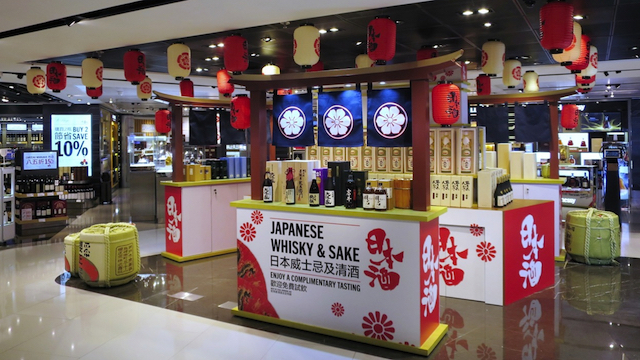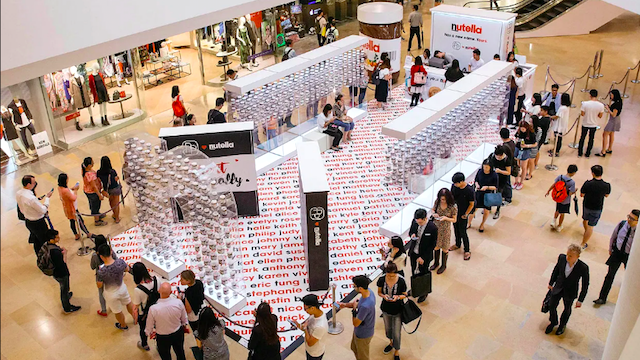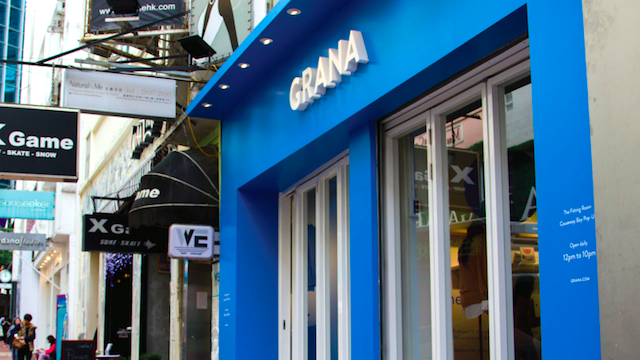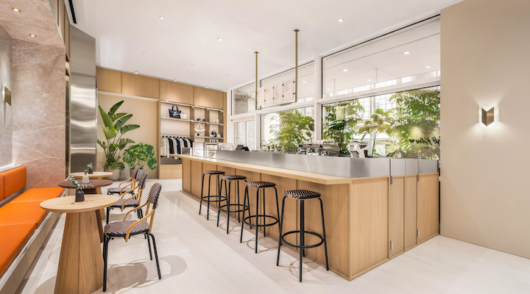Pop-ups have moved from gimmick to mainstream; from cheap and cheerful to sophisticated and often luxe.
A trend has turned into a revolution – and according to the experts we are only just beginning to see the start of it.
The rapid rise of the pop-up is part of the retail revolution under way in Hong Kong. While fuelled over the last 18 months by the continuing contraction of the luxury retail sector which has left landlords desperately seeking tenants to fill empty stores, this is no short-term fad. Pop-ups are here to stay. In fact there are good grounds to believe they may soon become the mainstay of the modern brick-and-mortar retail real estate industry.
“Within five years, 20 per cent of all retail sales will be through pop-up stores,” predicts Benoît Clément-Bollée, co-founder & CEO Asia, of Storefront. “That’s worldwide. They already account for US$8 billion in sales globally.”
Storefront is a specialist online matchmaking service for brands and retailers seeking temporary – or not-so-temporary – retail space. In September, Clément-Bollée merged his two-year-old French-based company OuiOpen with US-based Storefront to create a multinational B2B service he likens in concept to vacation rental site Airbnb. OuiOpen was already operating in Hong Kong, Paris, London and Amsterdam; Storefront in New York, Los Angeles, San Francisco and Chicago. The combined operation now boasts a database of some 10,000 spaces across those markets; more than 30 million square feet of retail space.
In Hong Kong, Storefront has 700 spaces advertised online and another 600 offline (because landlords often don’t want the availability widely known).
Storefront helps lease space for as little as one day to as long as one and a half years. The online solution means brands can choose space and book directly. But Storefront offers the added value of its matchmaking system.
“We know the city very well and we try to understand the brands… so they know they can reach all their goals with us. We make sure they open in the right place.”
A concept growing up
Pop-ups have evolved dramatically in a very short time.
“Four years ago,” recalls Clément-Bollée, “pop-ups were typically a clean bare shell shop in a single site.” Now, more and more, pop-ups are now being opened by big retailers and he expects the market across broader Asia will mature into something more like New York or London.
“You go and visit any pop-up there and it’s sophisticated.”
But they’re not always expensive to construct or fit out. “Of course you don’t want to invest a lot in fit-out if it’s only going to be there for a month or two.”
Clément-Bollee says the pop-up market is obviously growing fast in Asia, “but it’s not booming yet”.
“It’s a perfect solution in time of economic uncertainty. And it’s also a perfect tool for O2O.”
In the words of Angel Young, MD of Nielsen Hong Kong and Macau: “Pop-up stores bring new excitement to customers. Retailers are trying more aggressively to adjust to changing consumer demand by providing more ‘special’ and better-quality products. Consumers are looking for an experience.”

Beyond high street and mall locations, pop-ups are increasingly being used in major airports around Asia to boost brand awareness and promote limited editions.
Liquor companies, confectioners and cosmetics brands are all now routinely using pop-ups in Hong Kong International Airport, Singapore’s Changi and others in the region, many of them offering opportunities for travellers to interact with the brands. The pop-up pictured here was run by DFS Group to promote Japanese whiskey and sake brands and ran for a month.
Core benefits
In the past, pop-ups may have been perceived as a quick-fix for a landlord to fill distressed space. But the concept has matured into something far more sophisticated than that. Here are some of the other stand-out benefits..
Brands (as opposed to retailers) can use pop-ups to build awareness. Designers can use them to launch capsule collections or collaborations with celebrities or brands. Not-for-profits can use them to highlight a cause or a specific event. FMCG companies can use them to build customer affinity with a product.
At the end of August, confectionery giant Ferrero opened a pop-up store in Pacific Place in for its Nutella brand. Queues often snaked from the counter past permanent stores, shoppers contentedly waiting to pay HKD80 for a 350-gram jar of hazelnut spread with a personalised name on it. In less than three weeks, the company sold more than 17,000 jars.
Landlords can encourage pop-ups to create excitement amongst shoppers and build foot traffic by promoting an experience or offer with short life-span. Some mall owners see pop-ups as an opportunity to change the positioning of a mall – and to excite interest and boost footfall which hopefully rubs off in increased sales for long-term tenants.
Hysan Place has hosted pop-ups for Nike, Kiehl’s, Uniqlo, Nespresso and Lululemon.
“Pop-up stores offer freshness,” says Kitty Choy, director of the retail business for Hysan Development Co. “The element of surprise keeps shoppers anticipating to discover: What is going to come next?”
Retailers can use pop-ups to test locations in a market – or even a new market in itself. They can compare mall-to-mall, mall-to-high street or suburb-to-suburb. That works both ways, because while a retailer can test the mall, the mall can test the retailer as well.
Canadian athleisure chain Lululemon successfully used pop-ups to test market demand and the ideal retail location for its brand before formally committing long term to Hong Kong. It continues to run pop-ups, recently using one to run yoga classes at Hysan Place.
“A lot of retailers use the system to test locations. They go for six months, find it works well so take six months more and after that lease longer term,” says Clément-Bollee.
Hip flip-flop brand Havaianas chose a Mexican cafe in Pacific Place as a location to test short-term retail sites this year. Peter Solomon, executive director of local distributor Electric Sekki, says sales at the pop-up exceeded those from its brick-and-mortar stores by 40 per cent.
“We will definitely open more pop-ups in Hong Kong. We can take that model from location to location, using it multiple times.”
Online retailers can use pop-ups to build brand awareness, prove their credibility by having a physical presence offline and allow would-be customers to touch and see their products. Zalora, Lazada and Reebonz have used pop-ups in several Southeast Asian cities in recent years, usually by taking distressed space.
Luke Grana, founder of pure-play casualwear retailer Grana.com, describes pop-ups as a “crucial” marketing tactic in building offline awareness.
“In my experience with launching Grana.com, the founding team and I were able to meet potential customers, share our brand story, let them feel our fabrics, find the right fit and learn about the origin of our fabrics.”
Grana experimented with O2O experience about two years ago with a three-month pop-up on Pak Sha Rd in Causeway Bay. Painted in the brand’s distinctive bright blue, from the street front it had the look of a long-term store rather than a temporary trading space.
“We have created six pop-ups across Hong Kong to build awareness about our brand. It has contributed so much word-of-mouth for us and driven offline customers online. It’s where the future of retail is going and we want to continue shaking up the way people traditionally shop by using a data driven strategy and RFID technology to inform the changes we make to the offline experience.”
While those benefits may well appear obvious to retailers, one of the greatest drivers of pop-up growth internationally is the ability for landlords to optimise rents. Yes, you read that right: to optimise them. A growing number of building owners in cities with strong retail precincts like Shanghai are turning to short term rentals so they don’t miss out on soaring market rents. If you have three six-month tenancies in succession and the rental market is appreciating, you can raise the rent every six months. But if you’ve committed to a three-plus-three lease, while you might have a long-term tenant security, you’re usually only able to raise the rent after three years.
“In Hong Kong landlords are more and more willing to go short term. It’s a good solution for the current market – they all expect the market to get better in time,” says Clement-Bollee.
Cleverly disguised
Much of the time pop-ups are promoted in such a way shoppers know the store is only going to trade short term – especially if it is located in a mall atrium or forecourt.
But a growing proportion of pop-ups are deliberately designed to appear like long term tenancies.
In Causeway Bay there is a street – Pak Sha Rd – on which roughly 50 per cent of the retail stores are trading on short term leases. But the type of tenant which has moved in – edgy sportswear brands and spinoff concepts from the likes of Nike and Columbia – are attracting modern cafes and longer term tenants, lifting the foot traffic and profile of the street, benefitting everyone: landlords, existing tenants, pop-ups and longer-term debutants.
But the concept is not for every brand. Big, long-established brands often struggle to get their minds around the issues. For a start there is the perception they may face embarrassment from being seen to close a store because it failed. And for companies with a rigid brand DNA and identity, it’s hard to adapt. When your store-plan has evolved over years to dictate materials, shape, size and colour-scheme – rules which may be bent only to satisfy the physical constraints of a store shell – it’s not always practical by either budget or construction timelines to create a store with a lifespan of less than six months.
“Some brands and retailers will need to change to more flexible ways of doing things,” says Clement-Bollee. Think cheaper building materials, more flexible footprints and varied floorplans.
“This is a new way of thinking. It’s not something you plan six months ahead with a team of people. Some will need to evolve their company culture.”
With Causeway Bay the altar of retail spaces in Hong Kong – because it is the place to shop until you drop – it’s an unbeatable destination for pop-ups. The former fishing harbour now boasts mega malls, mid-price and luxury stores and affordable youth fashion boutiques, collectively offering something at every point along the price spectrum. Soho, Sheung Wan, Central and Wan Chai are the other stand-out locations, according to Storefront’s research and recommendation.
Going mobile
Pop-ups need not be restricted to high street or mall locations.
Two examples of thinking outside the box this year are Heineken’s pop-up tram and FashMobile, a specially decorated truck featuring the works of local fashion designers, which took to the streets of Hong Kong in September. The FashMobile was loosely based on the food truck concept.
While bringing a whole new definition to the phrase ‘fast fashion’ it kicked off an array of activities set to promote local fashion designers and brands. It parked outside Times Square in Causeway Bay, Central, Tsim Sha Tsui, Mong Kok, Tsuen Wan and Tseung Kwan O.
The tram pop-up, meanwhile, resulted from co-ordination between Hong Kong Tramways, which is encouraging private hire of trams, and Dutch brewer Heineken, who used it as the high-profile centrepiece of its ‘Shape Your City’ campaign in August.
The city’s first pop-up tram, it was painted in bright Heineken green and bore the famous red star. For a month it ran along the streets between Western Market and Causeway Bay three nights a week, hosting “city-shapers” invited by Heineken in what was effectively a heavily branded mobile bar.
“The tram is undoubtedly one of the most remarkable local icons of the city and is at the heart of every Hong Konger,” says Ernest Lam, Heineken Hong Kong GM, of the company’s rationale.
- This feature originally appeared in the autumn edition of Inside Retail Hong Kong magazine. To subscribe to our quarterly print (or digital) magazine, visit our website.








